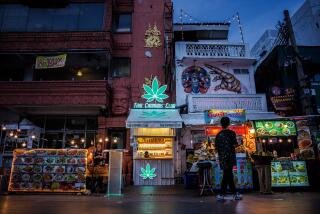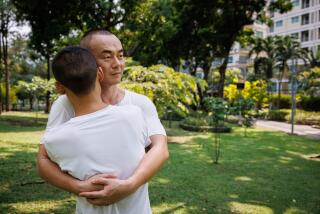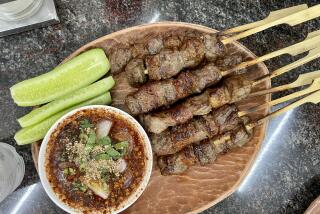Thais No Longer Snub Milk and Cheese
BANGKOK, Thailand — Not long ago many Thais thought milk made them sick and cheese was smelly stuff, but a younger generation is gulping down milk and devouring cheese-topped pizzas all across Bangkok.
“I think the nutritional qualities of milk are well-understood here,” said Mauri Uotila of the Bangkok office of the United Nations Food and Agriculture Organization. “People here see tall European and American people drinking a lot of milk. I think, like all parents, they want taller children with stronger bones.”
In keeping with an Asia-wide trend, consumption of milk in Thailand has gone up 56% from 1986 to 1988, and cheese imports have more than doubled over the last three years.
That is quite a nutritional shift for a country where milk was once thought fit only for infants and young children.
But Thailand’s milk consumption, averaging 9.4 quarts a year per person, is still the lowest in Southeast Asia. Japanese average an annual 75.5 quarts while Americans down 132 quarts, according to Att Senasarn, general manager for Nestle Products Inc. in Thailand.
The penetration of Western ways is also cited as a factor; thousands of Thais return from studies in the United States with a taste for milk shakes, pizzas and yogurt.
Although the Thai dairy industry has been growing rapidly, it still produces only a third of the 500,000 tons of milk consumed yearly. The rest is imported.
Hard to find less than a decade ago, fresh milk now takes its place next to soft drinks at street stands in Bangkok. And grocery stores are stocked with a bright array of more than a dozen different brands and types of sweetened, flavored, plain and low-fat milk.
Nestle’s Senasarn said that 85% of all milk consumed in Thailand is sweetened or flavored.
“The big problem in marketing is with taste. I think the so-called lactose intolerance problem has more to do with the question of taste,” he said.
It has been claimed that the greatest obstruction in promoting milk drinking in Thailand and other parts of Asia has been the prevalence of lactose intolerance among many Asians.
“Many people here say they can’t drink milk, but actually in many cases its because they don’t like it rather than because it gives them stomach trouble,” he said.
Uotila said that if a person stops drinking milk over a long enough period of time, the enzyme in the body necessary to digest lactose in the milk disappears and the person could encounter stomach problems including diarrhea from drinking milk.
About six years ago, the government began promoting milk, and slogans--”Have you drunk your milk today?”--appeared on billboards, television, and radio all over the country.
“The program was not so popular,” said Dr. Sirikul Isanurug of the Ministry of Health. “People thought milk was not for adults. This was the old concept still in mind. The government was trying to get all parts of society to drink milk but it’s not part of Thai culture.”
However unpopular the campaign may have been, awareness and acceptance of milk increased considerably, according to Eric Simon, director of Foremost Friesland Dairies, one of the leading dairy companies in the country.
The major milk campaign has let up in recent years and efforts are now being channeled into making milk available in schools, said Jiradej Sakulneya at the state-run Dairy Farming Promotion Organization.
“We are aiming milk promotion at the younger generation, particularly those in schools because they are the most affected by malnutrition and are the easiest to convert,” he said. “The older generation is pretty useless because they are not used to it and have problems with their stomachs.”
More to Read
Eat your way across L.A.
Get our weekly Tasting Notes newsletter for reviews, news and more.
You may occasionally receive promotional content from the Los Angeles Times.










